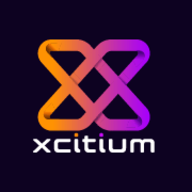

Find out what your peers are saying about CrowdStrike, SentinelOne, Microsoft and others in Endpoint Detection and Response (EDR).
| Product | Market Share (%) |
|---|---|
| Trend Vision One Endpoint Security | 1.9% |
| Open EDR | 1.0% |
| Other | 97.1% |


| Company Size | Count |
|---|---|
| Small Business | 45 |
| Midsize Enterprise | 36 |
| Large Enterprise | 57 |
Open EDR is an advanced solution designed to offer comprehensive endpoint detection and response capabilities. It focuses on providing strong security features tailored to meet the specific needs of modern IT environments.
Open EDR offers robust features for detecting, investigating, and responding to threats within an IT ecosystem. Its design caters to professionals seeking efficient threat management tools. By integrating seamlessly into existing infrastructures, it enhances security operations with real-time threat detection and efficient incident response. As a versatile tool, Open EDR supports a wide array of security use cases, making it an essential part of contemporary IT security strategies.
What are the standout features of Open EDR?In the financial sector, Open EDR is often implemented to safeguard sensitive data while ensuring compliance with industry regulations. Tech firms utilize it to maintain comprehensive oversight and control over their digital environments, adapting quickly to emerging threats and vulnerabilities.
Trend Vision One Endpoint Security delivers comprehensive antivirus, data protection, and device management. It offers robust threat detection and is deployable on-premises or via the cloud, making it versatile for endpoint security across organizations.
Emphasizing reliable endpoint security, Trend Vision One guards workstations and servers with extended detection and response features. Its machine learning-driven threat detection offers protection from malware and viruses, including zero-day threats. With seamless updates and automation, it minimizes administrative burdens, making deployment efficient. Criticisms include high resource use during scans and integration complexities, with calls for improved data loss prevention and better encryption. Users see the need for enhanced Linux support and quicker security updates.
What features define Trend Vision One Endpoint Security?In the finance sector, Trend Vision One is implemented for robust data protection and regulatory compliance. Healthcare providers rely on it for protecting sensitive patient information from cyber threats. Retailers use it for safeguarding payment systems and customer data against breaches, ensuring uninterrupted business operations.
We monitor all Endpoint Detection and Response (EDR) reviews to prevent fraudulent reviews and keep review quality high. We do not post reviews by company employees or direct competitors. We validate each review for authenticity via cross-reference with LinkedIn, and personal follow-up with the reviewer when necessary.